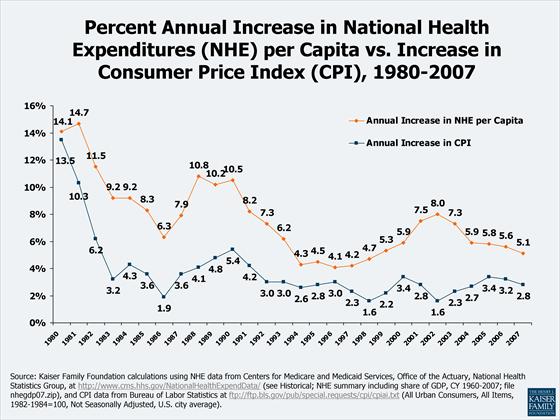The “Invisible Hand” … or the Hand of Death?
By Justin Williams
While the two parties falsely stage a contrived debate on the “desirable” degree of socialized medicine in the market place and what should and shouldn’t be taxed, one myth that is not being discussed in the news must be busted:
The current health care system is not a market.
A competitive market consists of various buyers and sellers voluntarily exchanging goods and services within a price system, either with currency or other goods. While health care has many buyers, it has few sellers, and no price system.
The lack of prices in any industry throws market coordination off, which creates many of the problems America is facing today. In a pure competitive market-based system, buyers and sellers, working tandem, would not be faced with rising costs and lower coverage.
Simply put, if the prices were to high for buyers to afford, sellers would do everything in their power to lower their prices so that they would not go bankrupt.
Instead, under today’s non-competition price-fixing system, health care expenses keep going up causing insurance companies to up their rates. This is when the last remnants of a market kicks in and more costs taken out of employees checks translates into less people willing to pay.
But isn’t this a price? No, it is one fixed amount taken out of the employee’s check every month regardless of whether he or she goes to the doctor every day of the month, or not at all.
And for most private health insurance plans, when the person visits the doctor they only pay a fixed co-pay (usually $10 or $20) regardless of how many tests they did or did not have.
This would be like joining grocery store with a flat membership fee in which the person had to pay the same price whether they were buying a Thanksgiving feast or running in to grab a gallon of milk. For obvious reasons, no grocery store has ever set up their business model this way.
This is because customers would only buy the most expensive items. If the choice were between filet mignon and scrapple as your meat for dinner and cost was not an option, the choice would be fairly obvious.
In fact, since the cost is not associated with the item at all, there is only an incentive for the producers to raise the price on the grocer. This slowly trickles into higher membership rates, meaning less people will be members as expenditures will rise higher than consumer price index (see below). In the case of health care, this means fewer people being able to afford insurance, while those who do have it live with a false sense of security, blithely unaware that the roof will inevitably fall.
So we know why over the past 60 years, the third-party-payer system has perverted the health care market place. But the question remains, how did we get to this point?
After World War II, President Franklin Roosevelt worried that the transition of millions of soldiers back to the workforce would drive down current wages. So Roosevelt froze wages.
This put business owners in a position where they could not attract better skilled labor with more money. So, of course, they offered benefits, and third-party pay was born. After this, it would be near impossible for businesses to stop offering employees those benefits and go back to a true market price system.
Without prices, there is no market information. And with flat rates for everything, there is only one preference, which equals higher costs.
The Republicans have not offered any solutions and will lose the debate if they stick with the status quo argument. The status quo and the Democratic plan to socialize health care both lack the necessary price mechanism to make health care affordable and viable for everyone.
It’s simple, the constant increase in costs is due to the lack of a market price structure. And if the situation, whether the statue quo or the proposed plan, continues to lack market price competition then health care costs will continue to rise. And if businesses cannot reduce costs, they will be forced to reduce quality.
In short, the Obama health care scheme offers, the worst of both worlds: higher costs and lower quality. Not to mention euthanasia for those sentenced to the rationing rooms.
Justin Williams is the Senior Commentary Editor of ALG News Bureau and as always accepts any comments or questions for the Barstool Economist at justin@getliberty.org.



